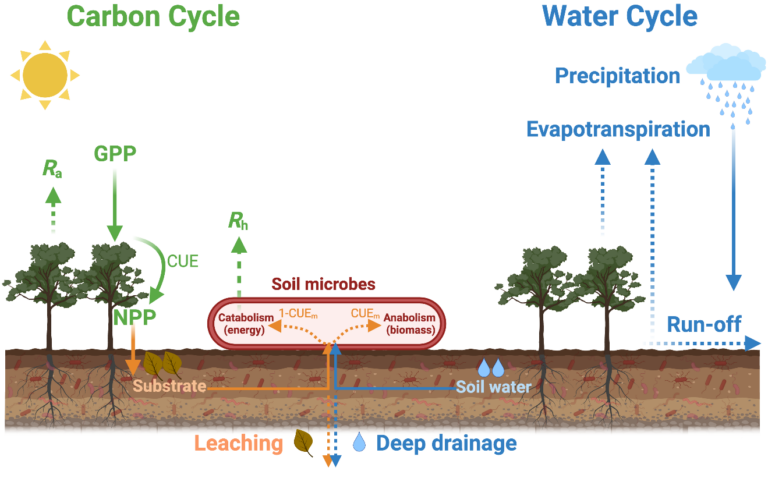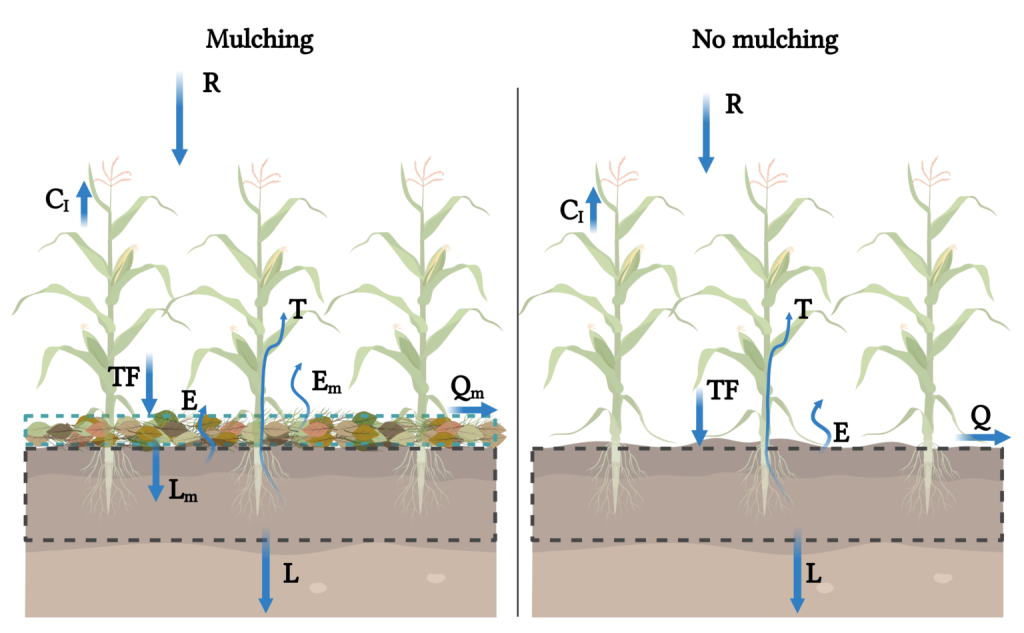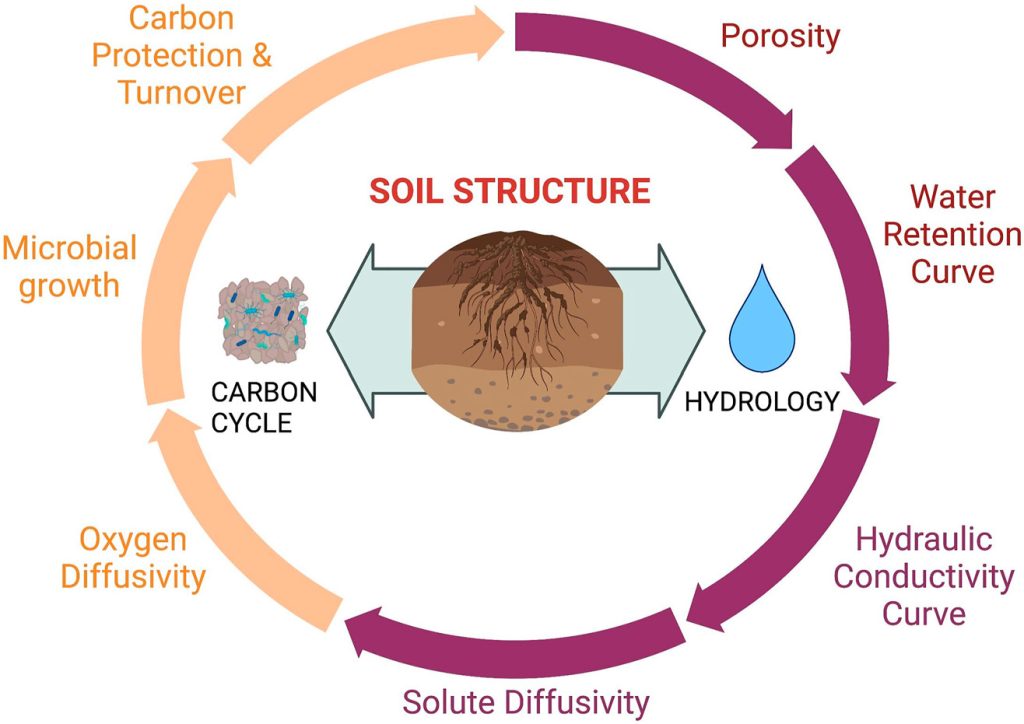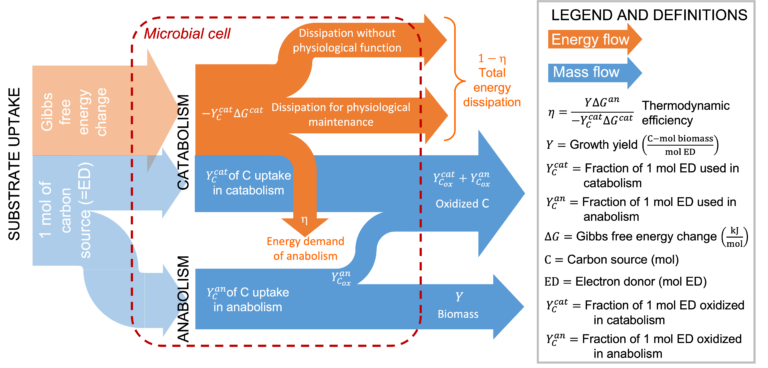RESEARCH AREAS AND PROJECTS
ECOSYSTEMS AND GLOBAL CHANGE
We are studying how the ecosystem scale water and carbon cycles interact and respond to changes in climate and land use. Within this context, we are also assessing the potential of negative emissions technology to sequester CO2. We are leveraging satellite observations and flux tower data from multiple sources, and models coupling hydrology and soil biogeochemistry.
Selected publications:
-Huang, Heng, Ignacio Rodriguez-Iturbe, and Salvatore Calabrese. “Widespread temporal and spatial variability in net ecosystem productivity under climate change.” One Earth (2024).
-Huang, Heng, Jin Wu, and Salvatore Calabrese. “Emergent climatic controls on soil carbon turnover and its variability in warm climates.” Geophysical Research Letters 50.22 (2023): e2023GL105291.
-Huang, Heng, Salvatore Calabrese, and Ignacio Rodriguez-Iturbe. “Variability of ecosystem carbon source from microbial respiration is controlled by rainfall dynamics.” Proceedings of the National Academy of Sciences 118.52 (2021): e2115283118.


CLIMATE-SMART AGRICULTURE
We are working towards developing sustainable agricultural practices that limit water use, nutrient inputs, and greenhouse gas emissions, so as to limit the impact that agriculture is having on the regional and global scales.
Selected publications:
-Souza, Rodolfo, Jun Yin, and Salvatore Calabrese. “Optimal drainage timing for mitigating methane emissions from rice paddy fields.” Geoderma 394 (2021): 114986.
-Souza, Rodolfo, Achla Jha, and Salvatore Calabrese. “Quantifying the hydrological impact of soil mulching across rainfall regimes and mulching layer thickness.” Journal of Hydrology 607 (2022): 127523.
-Calabrese, Salvatore, et al. “Nano-to global-scale uncertainties in terrestrial enhanced weathering.” Environmental Science & Technology 56.22 (2022): 15261-15272.
SOIL WATER AND CARBON CYCLING
As the land continuously evolves subject to climate climate and land use changes, soil water and carbon cycles cannot be studied independently. Changes in soil carbon inputs from vegetation, water availability, and human practices can quickly alter soil structure, which in turn affects soil hydraulic properties and microbial activity. All these processes are tightly linked and need studied together! That is why we are developing new modeling framework that couple all these aspects.
Selected publications:
-Jha, Achla, et al. “Linking soil structure, hydraulic properties, and organic carbon dynamics: A holistic framework to study the impact of climate change and land management.” Journal of Geophysical Research: Biogeosciences 128.7 (2023): e2023JG007389.
-Calabrese, Salvatore, Binayak P. Mohanty, and Ashish A. Malik. “Soil microorganisms regulate extracellular enzyme production to maximize their growth rate.” Biogeochemistry 158.3 (2022): 303-312.


MICROBIAL METABOLISM AND THERMODYNAMICS
We are investigating our soil microbial communities regulate their metabolism, and allocate their carbon and energy resources, depending on environmental conditions. We are found interesting patterns in carbon use and thermodynamic efficiencies.
Selected publications:
-Calabrese, S., Chakrawal, A., Manzoni, S. and Van Cappellen, P., 2021. Energetic scaling in microbial growth. Proceedings of the National Academy of Sciences, 118(47), p.e2107668118.
-Chakrawal, A., Calabrese, S., Herrmann, A.M. and Manzoni, S., 2022. Interacting bioenergetic and stoichiometric controls on microbial growth. Frontiers in Microbiology, 13, p.859063.
